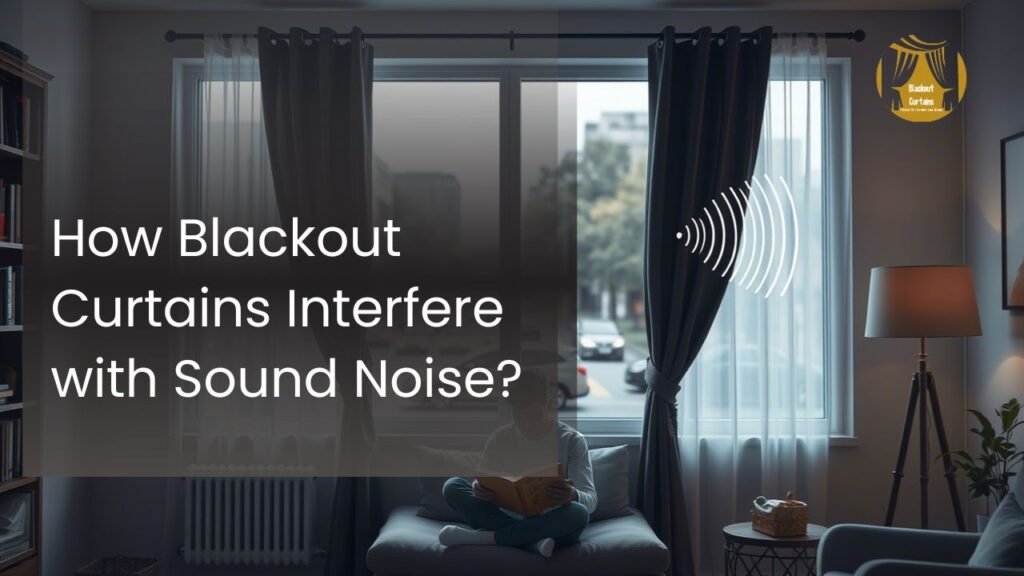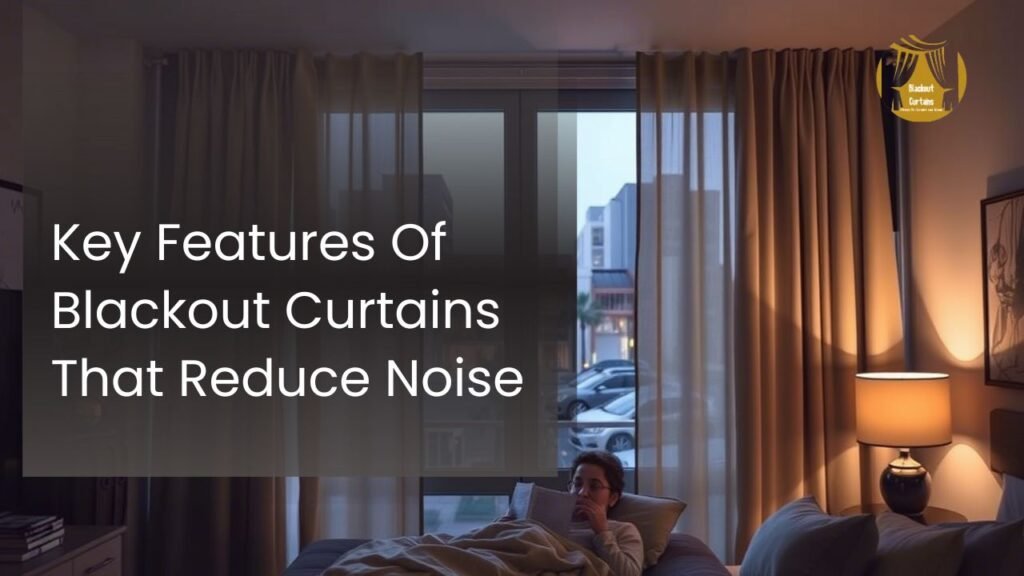Blackout curtains are often marketed as a solution for two major problems: blocking unwanted light and reducing noise. But how effective are they really, especially in bustling cities like Dubai, where noise pollution is a constant challenge? If you’ve ever wondered whether blackout curtains live up to their claims of noise reduction or if it’s just clever marketing, you’re not alone.
We will discuss the science behind soundproofing and explore how blackout curtains interact with noise. Using acoustic principles and real-world examples, we’ll separate fact from fiction to help you make an informed decision.
How Sound Travels & How Curtains Interfere?
To understand how blackout curtains reduce noise, it’s important to first grasp the basics of how sound travels. Sound moves in waves, and these waves have two key characteristics: frequency and amplitude. Frequency refers to the pitch of the sound. High-frequency sounds include things like voices or birds chirping, while low-frequency sounds are deeper, like bass from music or the rumble of machinery. Amplitude, measured in decibels (dB), determines how loud the sound is. For example, a whisper might be around 30 dB, while heavy traffic can reach 85 dB or more.
When sound waves hit a surface, they can either be absorbed, reflected, or transmitted. Regular curtains tend to reflect most of the sound into the room, which doesn’t do much to reduce noise. Blackout curtains, on the other hand, are made from dense, multi-layered fabrics that absorb sound waves instead of letting them pass through. This absorption is what makes them effective at muffling noise.
How Blackout Curtains Interfere with Sound Noise?

Three main factors determine how well blackout curtains interfere with sound:
Mass:
The weight of the fabric plays a crucial role. Heavier fabrics, typically measured in grams per square meter (gsm), block more sound because they’re harder for sound waves to penetrate. For example, a curtain with a fabric weight of 300 gsm will perform better than one with 200 gsm.
Layers:
Blackout curtains often have multiple layers, each serving a specific purpose. For instance, a triple-weave design includes an outer layer for aesthetics, a middle layer for insulation, and an inner layer for noise absorption. These layers work together to trap sound waves, preventing them from entering your space.
Seal:
Even the best blackout curtains won’t block noise effectively if there are gaps around the edges. Sound can easily leak through spaces between the curtain and the wall or floor. Installing curtains with side tracks or overlapping panels helps create a tighter seal, significantly improving their noise-reducing capabilities.
Understanding these principles gives us a clearer picture of why blackout curtains can reduce noise, but also why they have limitations when it comes to certain types of sounds.
How Much Noise Do Blackout Curtains Block?
Blackout curtains are not a substitute for professional soundproofing. Studies and real-world tests show that they can reduce noise levels by 25-50%, depending on several factors. Let’s break this down further based on different types of noise sources:
Traffic/Street Noise:
Mid-frequency sounds like car horns, honking, and engine noises are relatively easy for blackout curtains to handle. On average, they can reduce these types of noises by 30-40% . This makes them ideal for apartments near busy streets or highways, such as those along Sheikh Zayed Road in Dubai.
Neighbor Voices:
High-frequency sounds, such as conversations or barking dogs, are slightly easier to absorb compared to low-frequency noises. Blackout curtains can reduce these sounds by about 20-30% , making them a good option for shared walls in apartments or townhouses.
AC/Mechanical Hum:
Low-frequency noises, like the hum of air conditioners or generators, are the hardest to block. Blackout curtains may only reduce these sounds by 15-25% , as their dense fabrics struggle to absorb deeper tones. For significant low-frequency noise issues, additional measures like acoustic panels or double-glazed windows are necessary.
It’s worth noting that blackout curtains aren’t designed to replace specialized soundproofing solutions. Acoustic panels, for example, can achieve noise reductions of 50-70% , but they come at a much higher cost and lack the dual functionality of blocking light. Blackout curtains strike a balance between affordability and performance, making them a practical choice for moderate noise problems.
Key Features Of Blackout Curtains That Reduce Noise

If you’re considering blackout curtains for noise reduction, here are some key features to look for:
Fabric Weight:
The heavier the fabric, the better it performs at blocking sound. Look for curtains with a fabric weight of 300 gsm or higher. Thermal blackout designs often meet this standard, providing both noise reduction and temperature regulation.
Layers:
Multi-layered curtains outperform single-layer options. A triple-weave design is particularly effective, as it combines aesthetic appeal with functional benefits like noise absorption and thermal insulation.
Installation Tips:
Proper installation is critical for maximizing noise reduction. Here’s how to get it right:
- Tracks/Channels: Opt for curtains with side tracks or channels instead of rod pockets. These create a tighter seal, minimizing sound leakage.
- Ceiling-to-Floor Coverage: Ensure the curtains extend from the ceiling to the floor, leaving no gaps for sound to escape.
Bonus Feature:
Many blackout curtains also offer thermal insulation, which correlates with better noise reduction. The thicker lining used for heat retention also absorbs sound waves, giving you added value for your investment.
Blackout vs. Dedicated Soundproofing Curtains
While blackout curtains are versatile and affordable, they’re not always the best choice for extreme noise issues. Here’s a comparison to help you decide:
1: Blackout Curtains
Pros: Blocks light + some noise, widely available, budget-friendly.
Cons: Struggles with low-frequency sounds like bass or machinery.
2: Acoustic Curtains:
Pros: Designed specifically for noise reduction, capable of blocking 50-70% of sound.
Cons: Expensive, limited availability, no light-blocking properties.
For most people dealing with moderate noise, blackout curtains strike the perfect balance between functionality and cost. However, if you live near a construction site or experience very loud low-frequency noises, consider combining blackout curtains with other soundproofing methods.
Read more: Do Blackout Curtains Improve Sleep Quality?
Pro Tips to Maximize Noise Blocking
To get the most out of your blackout curtains, follow these tips:
- Layer Them: Pair with sheer curtains for extra mass.
- Seal Gaps: Use magnetic strips or foam tape around edges.
- Add Rugs: Reduces reflected sound in the room.
Conclusion
Blackout curtains are an excellent solution for moderate noise issues like traffic, voices, and general street sounds. They’re affordable, easy to install, and provide dual functionality by blocking both light and noise. However, for severe noise problems (especially low-frequency sounds like bass or heavy machinery), you’ll need to combine them with professional soundproofing methods.
For best results, prioritize curtains with 300+ gsm fabric and side seals. With the right setup, you can enjoy a quieter, more peaceful environment in your Dubai home or office.

